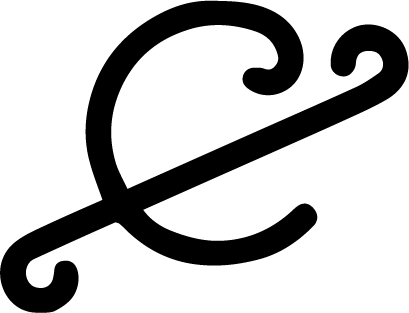Press me like one of your french brews
Do you own a French press? Cafetière? Caffettiera a stantuffo? Coffee Press? Plunger? If you said yes to any of these, you have the same thing. They’ve been around for donkeys and if you don’t have one, your gran probably does.
Many names aside, why have we fallen out of love with them? At least for some, I could be wrong, I bet some people still use these on the daily. I’m here to tell you that not only can you still use these nearly 100 year old devices (predating the Moka Pot), but maybe you should.
Making coffee at home has become easier and easier as time goes on, especially with so many cafes being closed over the last couple of years for some reason 🙄 home brewing has become more popular than ever. With espresso machines becoming more affordable, manual brewing like V60 becoming more accessible, (some credit to our coffee lord and saviour James Hoffman) and specialty coffee getting more familiar. There’s no reason not to!
But why is the ol’ plungey boi forgotten about? 😭 I think it’s because it’s the inbetween; it’s not as “strong” or punchy as a stove-top or espresso, nor as “clean” as some form of percolation brewing. But it definitely shouldn’t be forgotten. In the realms of filter coffee, in fact, it’s really close to how we taste, score and choose which coffees to buy.
It’s just another form of cupping ☕️
Cupping is the process of steeping ground coffee in, well, cups. I won’t go into the process too much as that’s definitely a story for another blog. But in a nutshell, we brew with relatively coarse grind, with boiling water, directly in the cup, and allow to steep for 4-5 minutes. We then “break” the crust that forms on top, scoop off the foam and bits that surface, and allow another 4-5 minutes to pass for it to cool. Cue obnoxious slurping with pretentious soup spoons and all us coffee nerds, geeking the F out. But it’s fun, it’s important and pretty darn easy.
So how can this apply to your café français home brewing? A few things to think about first:
This is not a quick brew, for my best french press brews I set aside 10 minutes.
Brew ratio we recommend is 6g:100ml so you’ll need a set of scales. For example, for a 500ml brew it would be 36g of coffee.
Know the size of french press you're using, you want to leave a bit of head space though. If you don’t know, put it on a set of scales and weigh how much water fits in.
What’s your french press made of? If it’s something that will draw heat, you might want to pre-heat it. If you’re not sure if you should pre-heat. Is it cold to the touch when you pick it up? I would warm her up just to be safe.
Use the best water you can, if you have filtered water use that. Without going into too much detail, soft water is best. If you live in a hard water area consider filtering. But, honestly if you like the taste of the water you're using, that’s fine. Just only boil once, fresh is best.
Method:
Boil the kettle and pour into the french press to preheat, if doing so.
Weigh needed coffee beans and grind. Remember the ratio and we’re looking for a coarse sea salt, or raw sugar size.
Boil kettle once more with fresh water, empty french press. Place french press on scales and tare.
Pour ground coffee into french press, check the weight; grinders can retain some coffee so it’s always best to double check. Top up with more ground coffee if need be, and tare scales.
Pour freshly boiled water on top of ground coffee, (remember the ratio - if we had 18g coffee we’d need 300g water but anywhere close to that is fine.) Pour quite quickly to agitate and saturate all the grounds. If you don’t wet all the grounds, give a little stir with a spoon.
A “crust” should form on top, give that a gentle stir to break it.
Wait 4-5 minutes.
Gently press the plunger down, be careful not to disturb the coffee bed below. Leaving a small gap between the base of the plunger and coffee bed is recommended.
Pour and enjoy! Hot tip! If not drinking all at once decant into another jug, carafe or even teapot to avoid over extraction.
If your coffee is too bitter don’t change how you’re brewing, change grind size. Coarser coffee will lead to a less extracted brew. I would highly recommend grinding coarser than you think, then working your way finer bit by bit until you get diminishing returns, or too bitter coffee.
Remember, these are just tips, if you have your way to brew. Don’t let me stop you. Coffee like most things is subjective, you brew you.
But always have fun with it! 🤟

